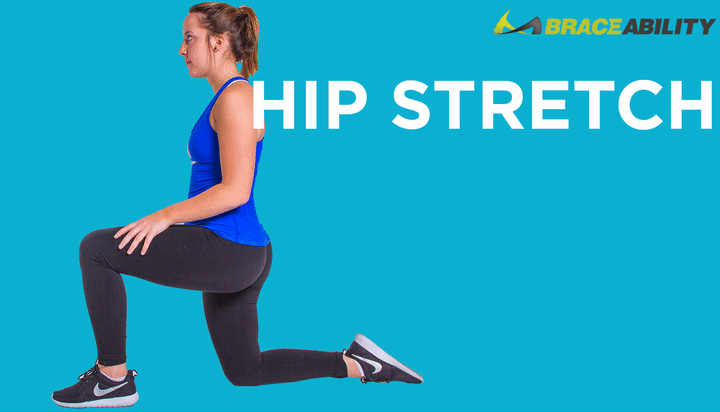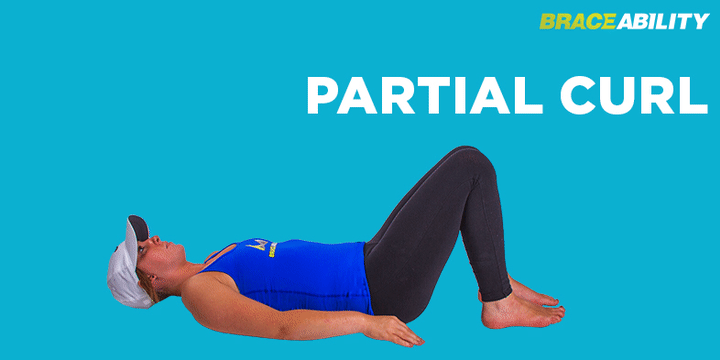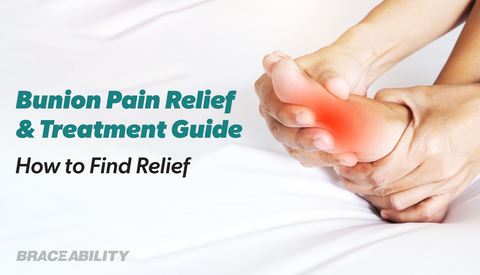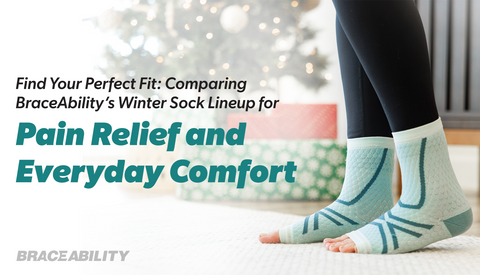3 Quick & Easy Steps to Recover from a Strained, Pulled, or Torn Back
How Do I Know If I’ve Strained My Back?
It's no surprise that the anatomy of your back is very complex in of itself since you rely on it for many different things. But to understand what causes a strained back, let's focus on three components: tendons, muscles, and ligaments. In order for you to move, run, and twist, you need all three of these components to work properly. Since they are constantly working to hold your body upright, they are very prone to injuries such as tearing, pulling, and over-stretching.

It’s important to understand that muscles get strained and ligaments get sprained! These are both considered soft tissue injuries, and people often use them interchangeably, but they are actually different
A sprain occurs when a ligament stretches or tears.
A strain occurs when a muscle or tendon stretches or tears.
Already confused? Read more to see a breakdown of the anatomy of your ligaments, tendons, & muscles in your back.
The most common symptoms of a torn, strained, or pulled muscle include:
- Sore or tenderness in your lower back
- Pain that occurs suddenly
- Muscle spasms
- Pain that increases when you stand, walk, or twist
- Stiffness in the back region
- Pain that radiates to your legs, buttock, or thigh areas
- Weakness in your muscles and tendons
Luckily for you, treating a back strain can be as simple as 1, 2, 3. Try doing these stretches, exercises, & prevention methods to help say goodbye to that annoying pain in your back!
How do I Treat a Strained Back Muscle?
Step 1. Stretching Your Lumbar Muscles to help with Strains or Tears
Stretching can help your back strain in numerous ways! Although stretching sometimes can be overlooked, it can be the key to your recovery process if you’ve pulled a muscle in your back. Stretching helps improve flexibility, improve your physical performance, increase your endurance, reduce the chance of injury, and increase blood flow. Who wouldn't want that right?
Stretching can be done in your house, at work, on the go - pretty much anywhere, so there’s no excuse to skip over this regime! If you’ve pulled, strained, or torn your back, stretching can be the first step to a speedy recovery. Stretching for a sprained back will help promote healing as this injury typically can last for around 4-6 weeks or if severe enough, it might take up to 10 weeks.
Stretches to Heal your Sore Back Muscle Pain:
-
Knee to Chest Stretch:
While lying flat on your back, have your toes point to the sky. Slowly bend your left knee and pull your leg close to your chest. Place your arms around your thigh or knee and pull it towards your chest. Hold this position for 10 seconds, repeat with the other leg.

-
Double Knee to Chest:
Start by lying on your back with both of your knees bent and feet flat on the floor. Next, slowly raise both of your knees to your chest, holding them with your hands. Pull your knees up so they are close to your chest and hold here for around 10 seconds then repeat.

-
Hip Stretch:
While standing with your feet shoulder-width apart, take a step back with your right foot. Bend your left knee and shift weight back to the right hip. While keeping the right leg bent at a 90-degree angle, bend forward more and reach down the right leg until you can feel your outer hip stretch. Repeat with the other leg.

-
Cat/Cow Stretch:
Start by kneeling on all fours with your hands directly below your shoulders and your knees lined up with your hips. While doing a large exhale, arch your spine slowly. As you inhale, use your core to round your back (like a cat). Repeat this motion about 10 times.

Step 2. Strengthen Your Back Muscles to Prevent Future Injuries
The second step to recovery for your pulled back include exercises to help strengthen your back, abdomen, and shoulders. You may be already aware of the benefits of exercising to strengthen your back such as loosening up your ligaments and tendons, preventing you from future injuries, repairing your muscles, and helping support your spine. The list could go on and on but you get the point. If you’ve sprained your back, strengthening your abdomen, shoulders, and back are all important as these components are what help support your spine.
Exercises to Prevent Pulling or Straining your Back Muscles:
-
Wall Sit:
Stand with your back against a wall and slowly lower yourself down to a sitting position. Hold this for 30 seconds (or as long as you feel comfortable) then repeat.

-
Bridge Yoga Pose:
While laying on the ground, bend your knees and place your feet shoulder width apart on the ground. Slowly start lifting your back off of the ground at about a 45-degree angle. Hold this position for 20 seconds then repeat.

-
Partial Curl:
Lie on the ground with your knees bent and feet flat on the floor. Using your core muscles, slowly raise your shoulders off the floor. Hold this position for around 1-2 seconds then lower your shoulders back down. Try not to use your neck to hold your shoulders up but your ab muscles instead. Repeat this motion around 15 times.

-
Press Up:
Lie on the floor on your stomach with your hands under your shoulders. Push your shoulders off the floor using your hands and hold this position for 10 seconds. Then repeat.

Step 3. Rest, and Ice or Heat Therapy
The final step in this treatment process involves resting, using ice and heat therapy, and prevention methods to reduce the chance of straining your back again. Read more about the R.I.C.E. method here.) It’s no surprise that the benefit of resting during the recovery process is to help give your muscles a break from the work they typically endure every day. But this part can be a tricky as most doctors suggest you do not completely do bed rest but that you lower the number of activities instead.
Ice and heat therapy is a crucial part of treatment for your back muscle relief. Using heat can help open up your blood vessels, which promotes healing in your tissues, tendons, and muscles. Ice, on the other hand, narrows your blood vessels, which helps to reduce any swelling that you might be suffering from. Using a heat and ice therapy wrap can help you easily switch from applying hot and cold to your lower back.
And finally, another aspect of this step involves prevention methods to help you avoid straining, pulling, or tearing your back in the future. There are many different ways to help prevent a pulled back muscle including:
- Sleep on your back or side
- Avoid smoking
- Correct your posture. Try using a posture brace like this one to train your muscles to remain in the right position
- Use proper lifting techniques
- Eat a well-balanced diet and drink a lot of water



















